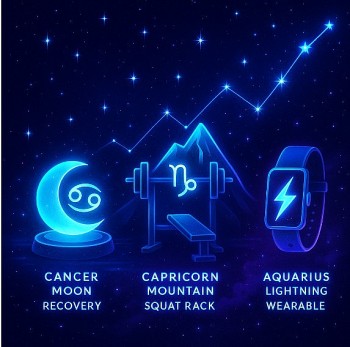5 Best Ways to Creat An Effective Case Study
 |
| What is a case study? |
| Contents |
1.What is A Case Study?
A case study delves deeply into an individual, organization, or occurrence. Almost every facet of the subject's past and present is examined in a case study in an effort to identify trends and explanations for behavior. Case studies are applicable to a wide range of fields. A few of these fields are social work, political science, anthropology, psychology, and medicine.
Finding out as much as you can about a person or group is the aim of a case study. From there, a wide range of other individuals can be covered by the information. Case studies frequently have a lot of subjectivity. It can occasionally be challenging to extrapolate its findings to a broader population.
Case studies with an individual or group focus will adhere to a structure. This structure is comparable to other psychology writing styles. When writing a case study, you have to adhere to the APA format guidelines.
2.Benefits and Limitations
A case study may possess both advantages and disadvantages. Before choosing to employ this kind of study, you should weigh the benefits and drawbacks. These are some common benefits and drawbacks of case studies.
Advantages
A case study offers a number of benefits, chief among them the ability to explore topics that are challenging to accomplish in a laboratory. The following are some additional advantages of case studies:
• Allows researchers to collect a lot of information
• Create an opportunity to gather information about rare or unusual cases
• Allows the researcher to develop hypotheses found in empirical research.
Disadvantages
In addition to their benefits, case studies still have certain drawbacks that must be addressed. You cannot edit and polish your case study until you have knowledge of those points. The following are some fundamental drawbacks that Knowinsiders has gathered and forwarded to you:
• Cannot generalize to a larger population
• Can't prove cause and effect
• Not tight
• May lead to bias
To find a special phenomenon that has just been discovered, you can conduct a case study. The new insights aid in the development of new concepts by the researchers. You can also formulate research questions for later investigations. Case study knowledge is insufficient to establish causal relationships between variables. It can be utilized, nevertheless, to formulate theories. From there, empirical research can be used to solve these issues.
3.Example
The history of psychology has some noteworthy case studies that you can learn about. Individual case studies were used to develop a large portion of Freud's work and theories. The following are some excellent instances of common case studies in psychology:
• Anna O: Anna O. is a fictitious name used by Bertha Pappenheim. She is one of Dr. Josef Breuer's patients. even though she is not one of Freud's patients. Breuer and Freud talked at length about this woman's case. She is exhibiting hysterical symptoms. It will help her symptoms if she talks about her issues. Talk therapy evolved in large part as a result of this case. This is regarded as a method of treating mental illness.
• Phineas Gage: Railroad worker Phineas Gage was involved in a horrific accident. In the explosion, a metal rod pierced his skull. It caused significant brain damage. Gage made a full recovery from his wound. But he's undergone significant behavioral and personality changes.
• Genie: A little child named Genie endures horrendous abuse and loneliness. Through Genie's case study, researchers can assess how well language can be taught. even if significant phases of language development are skipped or not. Her case serves as another illustration of how treatment can be hampered by scientific research. It also results in the mistreatment of weaker people.
These examples show how case studies can be used to investigate topics that are not amenable to replication in an experimental setting. Due to horrific abuse, Genie missed out on important developmental opportunities to acquire the language. It is obvious that researchers cannot ethically replicate this. However, studying non-reproducible phenomena was made possible by the case study on Genie.
4. Types of Case Studies
Next, readers will learn about the types of case studies that are commonly used. Choosing which type of case study to use will depend on the nature of the study.
• Collective case studies: These studies involve studying a group of individuals. Researchers may study a group of people in a given context or consider an entire community. For example, Psychologists can explore how accessing resources in a community has affected the overall mental health of those living there.
• Descriptive case studies: These studies involve starting with a descriptive theory. The subjects are then observed and the information collected is compared with the pre-determined theory.
• Case studies explain: They are often used to investigate cause and effect. Researchers looked at factors that caused some of the events to happen.
• Exploratory case studies: These are used as a starting point for further research. Researchers can gather more information before developing their questions and hypotheses.
• Specific case studies: These studies occur when individuals or groups allow researchers to dig deeper initially.
• Intrinsic case study: The researchers have a personal benefit from doing this research. Jean Piaget's observations of his own children are a prime example. This may contribute to the development of a psychological theory.
Intrinsic, particular, and collective case studies are the three primary forms that are frequently employed. Studying intrinsics can help you understand special cases. Particular case studies assist in examining each person to gain further insight into an issue as a whole. Examining multiple cases at once is made easier with the help of a collective case study.
5.How to Write An Effective Case Study
 |
| How to Write A Case Study |
You must understand the procedure in order to write an excellent case study. A few helpful hints for the implementation process will also be very beneficial to you. These are some crucial details to keep in mind when creating an extremely helpful case study.
Where to find data?
There are a number of different sources and methods for gathering information. Here are six main sources commonly used by researchers to analyze case studies:
• Archives: Census records, survey records, and name lists are examples of archives.
• Direct observation: This strategy involves observing the subject, usually in a natural setting. Individual observation is sometimes used. However, it is more common to create a group to observe.
• Documents: Letters, newspapers, administrative records, etc. are the types of documents that are often used as sources.
• Interviewing: Interviewing is one of the most important methods of gathering information. An interview can have structured survey questions. However, the use of open-ended questions is still common.
• Participant Observation: That is, the researcher acts as a participant in the events. They will also be observers of actions and results.
• Physical Artifacts: Tools, objects, instruments and other artifacts observed during direct observation of the object.
Part 1: History of the case study
to gain more insight into the process of creating the ideal case study. The following case history section's structure and content should be consulted by readers:
Background: You will give the patient's history in the first section of your paper. This encompasses elements like age, gender, occupation, health, past mental health issues in the family, relationships with family and friends, etc.
Describe the problem presenting: You will go into detail about the problem or symptoms the patient presented in the following section of the case study. Describe any symptoms, either mental or physical, that the patient has reported. It's important to record the feelings, ideas, and perceptions connected to the symptoms as well. All results are reported, and a detailed description is required for any screening or diagnostic evaluation.
Your assessment: Together with the relevant diagnostic and statistical manual code, provide your diagnosis. You have to describe how your diagnosis was arrived at. Additionally, you stated that the patient's symptoms met the diagnostic requirements. You should also mention any potential challenges in diagnosing the patient.
Part 2: Implement the plan
The treatment plan will be discussed in this section of the article. The chosen treatment's theoretical underpinnings are covered in this section. You can also provide any additional supporting documentation for your decision to take this course of action. Information regarding the objectives, methods, and results of the treatment should also be included in this section.
• Cognitive Behavioral Approaches: Describe the treatment plan that a cognitive behavioral therapist would use. This method describes treatment sessions and gives background information on cognitive behavioral therapy. The patient's reaction and the treatment's result are also mentioned concurrently. Throughout treatment, you note any challenges or victories the patient has had.
• Humanistic Approach: outlines a compassionate method that can be applied to patient care. like client-centered treatment. You must give details regarding the kind of treatment being administered, the patient's reaction, and the treatment's outcome. You must also provide an explanation for the treatment's success or failure.
• Psychoanalytic Approach: explains the perspective that a psychoanalytic therapist would have on a patient's issue. This method cites pertinent sources and gives some background information on the psychoanalytic approach. You must describe the course of treatment, the patient's reaction, and its efficacy.
Pharmacological approaches: When receiving better care through medication. Please provide the medication used and its purpose. You must also give background information regarding these medications' efficacy. It must also be compared to alternative treatment combinations.
Discussion
 |
| You need a discussion section in every case study |
A discussion of the case study itself ought to be included when writing one. Both the study's advantages and disadvantages are discussed in the material. You ought to understand how your case study's results can bolster earlier investigations. Additionally, you ought to discuss a few of your case study's implications.
For example: What ideas or findings might need further exploration? How might researchers explore some of these questions in additional studies?
More Tips
To do a good case study, you need to know specific tips. Here are some great tips that Knowinsiders wants to tell you to build the perfect case study.
• You must not call your Case study object “customer”. Instead, you should use their name or a separate pseudonym.
• You need to refer to the case study examples to get an idea of the style and format.
• Remember to use APA format when citing references.
6. Summarize
In marketing, case studies are an extremely helpful research tool. They must, however, be utilized carefully. The approach works best in circumstances where carrying out an experiment is either feasible or not. Case studies are helpful when examining particular circumstances. Additionally, it makes it possible for researchers to gather a wealth of data regarding a specific person or group of people.
In the event that a psychology course assigns you to evaluate a case study. If there are any particular guidelines that you need to adhere to, ask your instructor. If your case study is intended for a professional publication, find out the publisher's specific guidelines for submission by contacting them.
| All of the pertinent details regarding case studies and their execution are provided above. With any luck, this article has helped readers come up with the ideal case study for themselves. I hope this approach can be used in your own advertising campaigns. |
 What Is Content Marketing and How It Works? What Is Content Marketing and How It Works? Content Marketing is important in any business, but not easy to understand its benefits, advantages or disadvantages, and how to get started. |
 What Are The Differences Between B2B and B2C? What Are The Differences Between B2B and B2C? With the striking development of eCommerce, many companies have been modifying to adopt both B2B and B2C. So what are the differences between them? |
 Top 5 Career Opportunities in Digital Marketing Top 5 Career Opportunities in Digital Marketing Digital marketing is today one of the most in-demand fields. Everyone needs to implement a strategy, from small businesses to large corporations, to ensure their ... |























